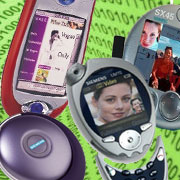Interest in “third-generation” 3-G mobile services is reviving, thanks to the positive reception that European users are giving to multimedia mobile services based on earlier technology. Following a delay of nearly three years, the largest mobile operators have begun to test the new technology, known as UMTS, with their major customers. Large-scale commercialization could come to Europe by the end of this year, or by the beginning of next year. Nevertheless, some experts still see too many uncertainties concerning both supply and demand.

Sign up to stay informed about our latest article releases.